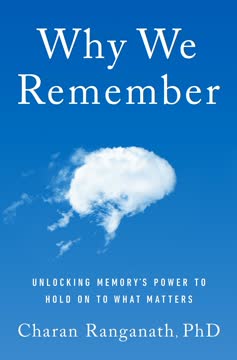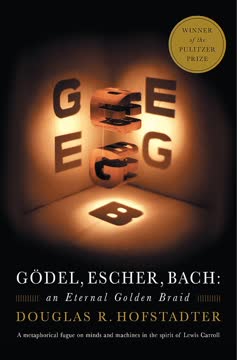重点摘要
1. 从维也纳到神经科学的旅程:个人经历塑造科学追求
“尽管我当时既没有预见性也没有语言能力说‘终于自由了’,但我当时确实感受到了这种感觉,并且一直以来都感受到了。”
逃离纳粹占领的维也纳,童年时期的埃里克·坎德尔的经历深刻地影响了他后来的科学追求。水晶之夜的创伤和随后逃往美国的经历在他的心理上留下了不可磨灭的印记,激发了他对记忆和人类心智运作的终身兴趣。
教育和早期职业生涯: 坎德尔的旅程从Flatbush的犹太学校到哈佛大学,他最初学习历史和文学,后来被精神分析吸引,最终转向神经科学。他对记忆生物学基础的好奇心促使他追求医学培训和神经生物学研究。
关键导师和合作: 在他的职业生涯中,坎德尔受益于哈里·格伦德费斯特等有影响力人物的指导,后者鼓励他“一个细胞一个细胞地”研究大脑,并与奥尔登·斯宾塞和詹姆斯·施瓦茨等科学家的合作。这些关系塑造了他对科学探究的态度,并导致了神经科学领域的突破性发现。
2. 记忆的细胞基础:研究简单系统揭示普遍原理
“我想从米尔纳停止的地方开始。我想解决记忆中最复杂和有趣的方面——对人、地点和事物的长期记忆的形成,而她在H.M.中发现这些方面是缺乏的。”
海兔作为模型生物: 坎德尔选择了加州海兔作为实验对象,因为它的神经系统简单且神经元大且易于识别。这一决定使他能够以前所未有的细节研究学习和记忆的细胞机制。
关键发现:
- 海兔的鳃缩回反射可以通过简单的学习形式如习惯化和敏化来改变
- 这些行为变化对应于特定神经元之间突触强度的变化
- 后来发现,海兔学习的分子机制在更复杂的生物体(包括人类)中也得到了保留
通过专注于一个简单的系统,坎德尔和他的同事们揭示了适用于不同物种的记忆形成的基本原理,为更深入理解人类记忆和认知奠定了基础。
3. 突触可塑性:学习和记忆的分子机制
“卡哈尔的想法和我在学习和记忆方面的早期研究是基于行为主义者使用的学习范式。行为主义者主要关注知识是如何获得和存储在短期记忆中的。”
突触可塑性指的是神经元之间的连接在经历后能够增强或减弱的能力。坎德尔的研究揭示了这一过程是学习和记忆的基本机制。
突触可塑性的关键方面:
- 短期变化涉及突触处现有蛋白质的修饰
- 长期变化需要新的蛋白质合成和基因表达
- 不同的刺激模式可以导致突触连接的增强(增强)或减弱(抑制)
坎德尔的工作表明,突触可塑性的基本机制在简单和复杂的神经系统中都在运作,为跨物种理解学习和记忆提供了统一的原则。
4. 从短期记忆到长期记忆:蛋白质合成和基因表达的作用
“我们现在有了直接的遗传证据表明地图与空间记忆相关。此外,我们发现,在空间记忆中,就像在海兔鳃缩回反射的简单隐性记忆中一样,获取地图(并保持几个小时)和长期稳定地保持地图的过程是有区别的。”
短期记忆涉及现有突触连接的临时变化,而长期记忆需要新蛋白质的合成和特定基因的激活。
关键发现:
- 转录因子CREB在将短期记忆转化为长期记忆中起着关键作用
- 重复刺激导致激活产生突触生长所需蛋白质的基因
- 新突触连接的形成对于长期记忆的存储至关重要
坎德尔的研究揭示了从短期记忆到长期记忆的转变涉及细胞信号通路、基因表达和突触结构变化之间的复杂相互作用。这一理解对治疗记忆障碍和增强认知功能具有深远的影响。
5. 显性记忆和海马体:大脑中的空间映射
“奥基夫在1971年发现了海马体中的位置细胞,布利斯和洛莫在1973年发现了海马体中的长期增强,但没有人试图将这两个发现联系起来。”
海马体在显性记忆的形成中起着关键作用,特别是涉及空间信息的记忆。坎德尔的研究连接了两条先前独立的研究线索:
- 位置细胞:海马体中的神经元,当动物处于特定位置时会发射
- 长期增强(LTP):突触强度的长期增强
关键发现:
- 海马体中空间地图的形成和维持涉及与其他形式记忆相同的分子机制
- 注意力和多巴胺信号对于稳定这些空间表示至关重要
- 海马体创建了环境的认知地图,可以灵活地用于导航和记忆回忆
这项工作在记忆的细胞机制和更高的认知功能之间架起了桥梁,提供了关于大脑如何表示和记住世界复杂信息的见解。
6. 情绪的神经生物学:理解恐惧和安全
“当我们观察经过安全训练的小鼠的外侧核时,我们发现了长期增强的相反现象:即对音调的神经反应的长期抑制,表明传递到杏仁核的信号被显著削弱。”
恐惧和安全是具有深厚进化根源的基本情绪状态。坎德尔对小鼠学习恐惧和安全的研究揭示了这些情绪背后的神经回路和分子机制。
关键发现:
- 杏仁核在处理恐惧相关信息中起着核心作用
- 学习恐惧涉及杏仁核外侧核突触的增强
- 学习安全涉及这些相同突触的减弱和纹状体中与奖励相关的回路的激活
这项工作不仅揭示了情绪的神经基础,还为治疗焦虑障碍和促进心理健康开辟了新途径。
7. 从神经科学视角看精神疾病:治疗的新方法
“显然,分子生物学有望为精神病学带来与神经病学相同的成就。”
精神疾病如精神分裂症和抑郁症长期以来一直难以理解和治疗。坎德尔的研究帮助弥合了神经科学和精神病学之间的差距,提供了对这些疾病生物基础的新见解。
关键方法:
- 使用基因改造小鼠模拟精神疾病的某些方面,如精神分裂症中的工作记忆缺陷
- 研究多巴胺信号和特定受体亚型在精神疾病中的作用
- 探索成人大脑中神经发生作为抗抑郁治疗目标的潜力
通过将分子神经科学的工具和概念应用于精神疾病,坎德尔和他的同事们为开发更有效和有针对性的精神疾病治疗方法开辟了新可能。
8. 心理学与生物学的桥梁:心智的新科学
“心智的新科学试图揭开意识的奥秘,包括终极奥秘:每个人的大脑如何创造出独特自我和自由意志的意识。”
心智的新科学整合了心理学、神经科学和分子生物学的见解,创造了对心理过程的全面理解。坎德尔的工作在桥接这些学科方面起到了关键作用。
关键方面:
- 将认知心理学的发现纳入神经科学研究
- 使用动物模型研究复杂的认知过程
- 应用分子和遗传技术研究心理现象
这种跨学科的方法导致了对大脑与行为关系的更细致理解,挑战了传统的心身分离观念,并为关于意识和自由意志的长期哲学问题提供了新视角。
9. 从基础研究到临床应用:记忆药物的前景
“生物技术时代为开发治疗精神疾病的新药带来了巨大的希望。”
将基础研究转化为临床应用一直是坎德尔职业生涯的驱动力。他对记忆分子基础的研究促成了记忆药物公司的成立,该公司致力于开发记忆障碍的治疗方法。
关键发展:
- 确定增强记忆和认知功能的分子目标
- 开发抗击与年龄相关的记忆丧失和阿尔茨海默病早期阶段的药物
- 探索认知增强剂在治疗各种神经和精神疾病中的潜力
尽管记忆增强药物的开发引发了伦理问题,但它也为减轻痛苦和改善数百万受认知衰退和精神疾病影响的人的生活质量带来了希望。坎德尔的工作体现了基础科学研究推动医学创新和改善人类健康的潜力。
最后更新日期:
FAQ
What's In Search of Memory about?
- Exploration of Neuroscience: In Search of Memory is an intellectual autobiography by Eric R. Kandel, detailing his journey as a neuroscientist and the evolution of the science of mind, particularly focusing on memory.
- Biological Basis of Memory: The book discusses how understanding memory has shifted from philosophical inquiries to biological analysis, emphasizing molecular biology's role in uncovering memory storage mechanisms.
- Personal and Scientific Journey: Kandel intertwines his life experiences, from his childhood in Vienna to his Nobel Prize-winning research, illustrating how personal history can shape scientific inquiry.
Why should I read In Search of Memory?
- Insightful Perspective: The book offers a unique perspective on the intersection of personal history and scientific discovery, making complex neuroscience accessible to general readers.
- Inspiration for Future Scientists: Kandel's journey may inspire aspiring scientists by showcasing the excitement and challenges of a career in research, highlighting the importance of mentorship and collaboration.
- Understanding Memory: Readers will gain a deeper understanding of how memory works biologically, relevant to contemporary issues like mental health and education.
What are the key takeaways of In Search of Memory?
- Mind and Brain Connection: Kandel emphasizes that "mind and brain are inseparable," suggesting that understanding mental processes requires a biological perspective.
- Neural Circuits and Memory: The book outlines how different mental functions are carried out by specialized neural circuits, with memory being a complex interplay of these circuits.
- Role of Synapses: Kandel discusses how synaptic connections change with experience, leading to memory storage, highlighting synaptic plasticity's importance in learning and memory.
What are the best quotes from In Search of Memory and what do they mean?
- “The brain is a complex biological organ of great computational capability.”: This underscores the intricate nature of the brain and its role in processing information, emphasizing the need to understand the brain to understand the mind.
- “Memory is essential not only for the continuity of individual identity, but also for the transmission of culture.”: Kandel highlights memory's significance in shaping personal identity and cultural heritage, illustrating its broader implications.
- “The new science of mind will be to the twenty-first century what the biology of the gene was to the twentieth century.”: This reflects Kandel's belief in the transformative potential of neuroscience, suggesting that understanding the brain will be as revolutionary as genetic discoveries.
How does Kandel describe his childhood in Vienna?
- Cultural Richness: Kandel paints Vienna as a cultural hub, rich in music, art, and intellectual thought, which profoundly influenced his upbringing.
- Impact of Historical Events: His childhood memories are intertwined with the rise of Nazism, leading to his family's displacement, shaping his understanding of memory and identity.
- Personal Connections: The narrative includes personal anecdotes, such as his experiences with family and education, which laid the groundwork for his later scientific pursuits.
What is the significance of the hippocampus in memory storage according to Kandel?
- Critical for Long-Term Memory: Kandel identifies the hippocampus as essential for converting short-term memories into long-term storage, with damage to this area resulting in profound memory loss.
- Role in Explicit Memory: The hippocampus is particularly involved in explicit memory, which includes facts and events, crucial for forming new memories.
- Connection to Other Brain Regions: While the hippocampus is vital for memory formation, long-term memories are ultimately stored in the cerebral cortex, highlighting the interconnectedness of brain regions.
How does Kandel relate his scientific work to psychoanalysis?
- Interdisciplinary Approach: Kandel discusses how his interest in psychoanalysis influenced his scientific inquiries into memory, believing that understanding the biological basis of memory can enhance psychoanalytic practices.
- Memory and Identity: He draws parallels between the psychoanalytic focus on memory and his research, suggesting both fields seek to understand how past experiences shape identity.
- Scientific Validation of Psychoanalytic Concepts: Kandel's findings provide empirical support for some psychoanalytic theories, particularly regarding unconscious influences on behavior.
What methods does Kandel use to study memory in Aplysia?
- Neural Analogues of Learning: Kandel employs a reductionist approach by studying the simple nervous system of Aplysia to understand the cellular mechanisms of memory.
- Focus on Synaptic Changes: His experiments observe how synaptic connections change in response to learning tasks, such as habituation and classical conditioning.
- Use of Large Neurons: Aplysia's large neurons facilitate the recording of electrical activity, making it easier to study the effects of learning on synaptic strength.
How does Kandel explain the concept of synaptic plasticity?
- Definition of Synaptic Plasticity: Kandel defines synaptic plasticity as the ability of synapses to strengthen or weaken over time, in response to increases or decreases in their activity.
- Mechanisms of Change: He discusses how repeated stimulation can lead to long-lasting changes in synaptic strength, essential for memory formation.
- Implications for Learning: Different forms of learning may produce distinct patterns of synaptic plasticity, suggesting the brain encodes various types of memories through specific changes in synaptic connections.
What role do neurotransmitters play in memory according to Kandel?
- Chemical Messengers: Neurotransmitters are crucial for transmitting signals between neurons at synapses, facilitating communication within neural circuits essential for memory processing.
- Specificity of Action: Different neurotransmitters, such as acetylcholine and glutamate, have specific roles in various types of memory, influencing learning and memory storage.
- Connection to Mental Disorders: Imbalances in neurotransmitter systems can lead to memory-related disorders, linking findings to broader implications for understanding mental health.
How does Kandel's work contribute to our understanding of mental illness?
- Biological Basis of Disorders: Understanding the biology of memory can provide insights into various mental illnesses, such as depression and schizophrenia.
- Potential for Treatment: Elucidating the cellular and molecular underpinnings of memory may inform the development of new treatments for memory-related disorders.
- Integration of Science and Psychology: Kandel advocates for a more integrated approach to studying mental illness, combining insights from neuroscience with psychological theories.
How does Kandel connect psychoanalysis to neuroscience in In Search of Memory?
- Historical Context: Kandel provides a historical overview of psychoanalysis and its evolution alongside neuroscience, arguing that Freud's theories about unconscious processes can be informed by modern biological research.
- Unconscious Processes: He explores the idea that many mental processes occur unconsciously, paralleling Freud's concepts, suggesting neuroscience can validate and expand upon psychoanalytic theories.
- Integration of Disciplines: Kandel advocates for an integrated approach that combines insights from psychoanalysis with findings from neuroscience, leading to a more comprehensive understanding of the mind and behavior.
评论
《寻找记忆》是一本引人入胜的自传与科学探索的结合。坎德尔从纳粹占领的维也纳到诺贝尔奖得主的个人旅程,与神经科学的历史交织在一起。读者欣赏他对复杂脑过程和记忆形成的清晰解释,尽管有些人觉得技术细节具有挑战性。这本书提供了对科学方法、反犹太主义的文化影响以及我们对心智理解演变的见解。虽然一些读者觉得某些部分不太吸引人,但许多人称赞坎德尔将个人经历与开创性研究联系起来的能力。











